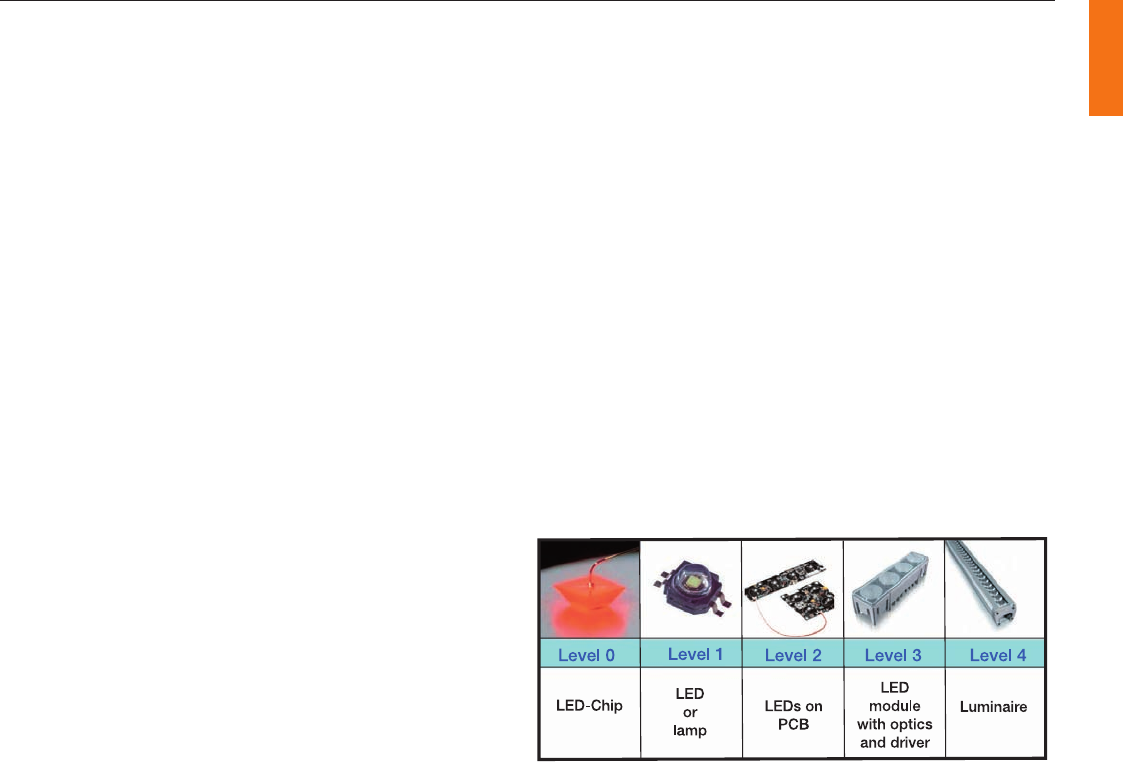
Philips indoor luminaires 12.9
Technical data
LED technology
Technical data
Ingeneral:
•Moreenergy-efcientthanincandescentandhalogenlamps
• Much longer life, up to 50 000 hours at 70 per cent of lumen
maintenance
• Reduced maintenance cost
• No unwanted IR or UV radiation in the beam of light, less risk of
fading of color pigments and textile
•Highlyefcientlow-costplasticopticscanbeused
Architecture/design:
•Designexibility,hiddencompactlightsources
•Vividsaturatedcolorswithouttheuseofadditionallters
•Directedlightforincreasedsystemefcacy
• Robust, vibration-proof, solid-state lighting
• Less light pollution due to precise optical control
UniqueLEDadvantages:
• Dynamic color control, white point adjustable
• Fully dimmable without color variation
• Instant switch-on at full color and full lighting level
•Notransmissionlossduetocolorlters
• Install and forget for a long time
Environment:
• No hazardous metals e.g. mercury in the light source
Safetyandlowtemperature:
• Low voltage dc operation
•Highlyefcientincoldenvironment
•Coldstartcapabilitydownto-40°C
• Sealed for life waterproof luminaires
Value chain
ThedenitionoflevelsofintegrationdescribestheroadfromLED
chip to luminaire, with increasing complexity and value. Philips
undertakes business activities at all levels of the value chain.
Level 0. LED chip
Semiconductor chips are the basis for every LED and these are grown
in complex wafer production equipment. The wavelength of the LED
isdenedaccordingtothemanufacturingprocess,theparametersand
the tolerance.
Level 1. LED component
Packagingisthenextstep.Herethethermalandopticalpropertiesare
determined and the chip is connected to its package by means of bond
wires for external connections.
Level 2. LED array
A miniature printed circuit board is used to connect one or more
LEDs, possibly together with driver electronics, and acts as a thermal
interface between LEDs and heat sink.
Level 3. LED module
A LED module combines heat sink, optics and separate driver in one
module, ready to be installed in a luminaire.
Amono-colortrafclightsourceisanexampleoflevel3.Threeof
thesemoduleswillbecombinedinalevel-4trafcsignalhead.
Level 4. LED luminaire
A LED luminaire can be connected directly to the outside,
mechanically and electrically. It houses, supplies power to and protects
the LED array(s) from the environment while maintaining optimal
operating conditions.
Philips LEDline is an example of a level-4 product.
Table. Survey of levels of integration and LED products.
LED lighting system
A LED lighting system comprises several components like a power
supply, controller, control interface and luminaire/LED arrays/optics.
In many cases one or more components are combined in one product
for ease of installation. In other cases there might be a need for more
exibilityintermsofsystemcongurationandcontrol.E.g.apower
supply or control interface may be shared by a group of luminaires.
Everysinglecomponentisselectedtottheapplicationdemands.
Lighting controls
The revolution of LED technology for lighting creates new possibilities
in the application of lighting. In many applications the dynamic
character of LED enables a lighting solution to create a unique
experience. By using RGB colors or variation in color temperature, all
sortsofeffectsaremadepossibleandcanbespeciedforaparticular
lighting design or application, both indoor and outdoor. To enable these
dynamic lighting solutions there is a need for lighting control systems
that create the right experience for the customer. Philips provides a
range of smart scene-setting lighting controllers that offers a reliable
solution for any project, from simple color selection at the push of a
button or the turn of a wheel to fully automated, pre-programmed
light control and or multimedia integration.
Indoor_2008_Chapter_12_LIS.indb 9 20-05-2008 14:32:56


















